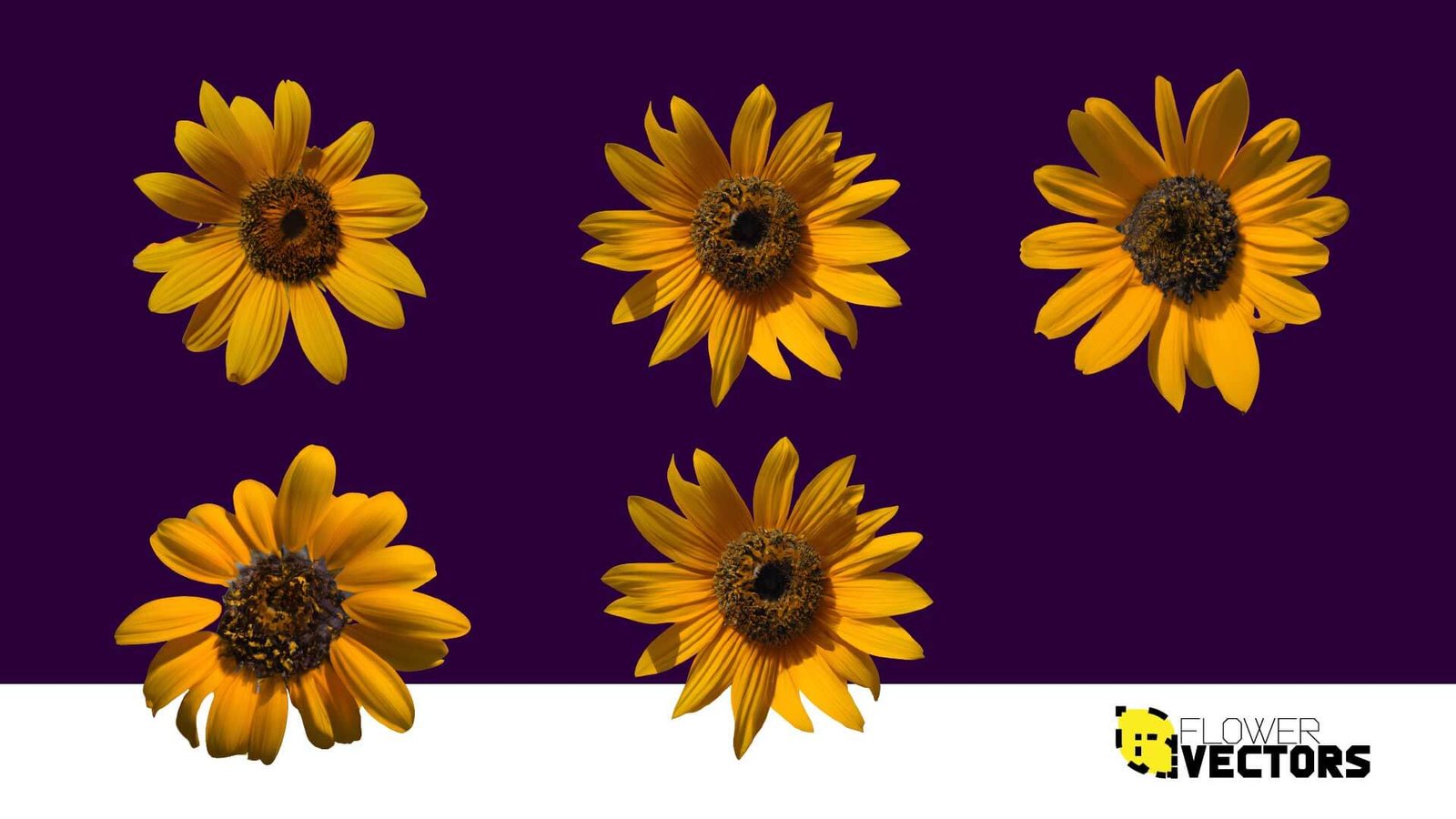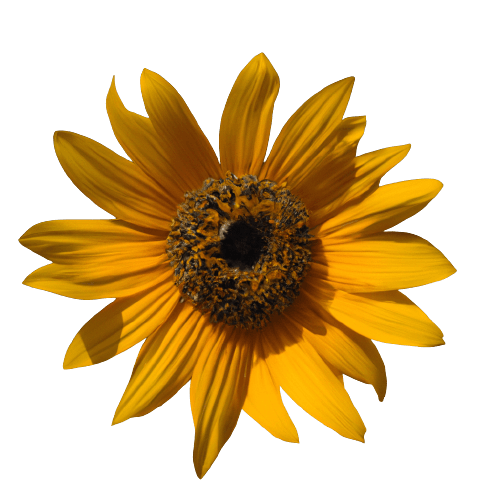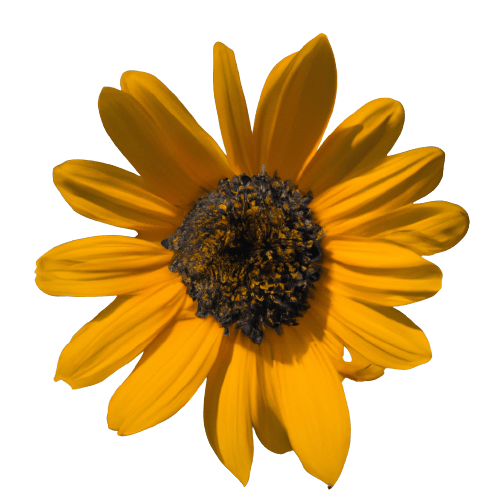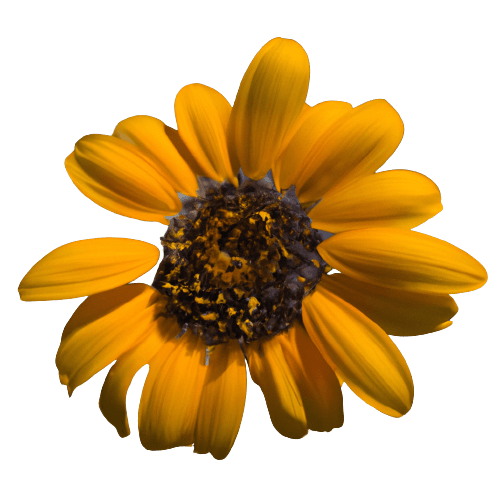Sunflower (Helianthus annuus L.) PNG
Sunflower (Helianthus annuus L.) flower images in PNG. All flower images are transparent, no background, free to download.






About Sunflower (Helianthus annuus L.)
Botanical description (Helianthus annuus L.):
Annual 1-2(4)m tall plant with taproot and adventitious roots. Stem sturdy, 2-7cm thick, erect, unbranched, covered with coarse hairs, core fluffy, white. Leaves are simple, simple, stalked, cordate-triangular, pointed, with three longitudinal veins, bristly on both sides. Charts large, 10-40(70)cm across, solitary, oblique. Marginal flowers yellow, tongue-shaped; inner ones brown, tubular, bisexual. Flowering July-October. Fruit a four-edged or flattened oblong husk. Oil, food, fodder, medicinal and ornamental plant.
Prevalence:
Native to western North America. Introduced to Europe as an ornamental plant. It was introduced by the Spanish. It is now cultivated all over the world. In Lithuania it is cultivated in gardens, kitchen gardens and fields.
Cultivation:
Sunflowers are sown in patios or other similar places, and composted as a backdrop to cover piles of earth. Depending on the variety, sunflowers can grow 1-2m high. Sown from mid-April onwards – 2-3 seeds every 50 cm in a hole. Once the seedlings have matured, the strongest plant is left to continue growing. The growth of sunflowers depends on the fertility of the soil.
– Greek: helios for sun, anthos for flower; large inflorescences look like the sun. They also tend to be turned towards the sun.
Only the tongue-shaped, fully developed flowers are collected for medicinal use. They are plucked from the rake and dried immediately in the shade. Also leaves that are picked without petioles. They are dried in the shade. The raw material contains essential oil, a colouring substance of a flavonic and carotid nature, choline, and the bitter substance helianthin. The fruits are harvested when the greater part of the fruit has ripened, as they ripen at different times. The seeds contain 35% semi-drying oil, protein, carbohydrates, 2% chlorogenic acid, tannic substances and other substances. The oil is clear, yellowish, has a faint, distinctive odour and a pleasant taste. It contains glycerides of linolenic and oleic acids.
Medicinal uses
Sunflower oil is used to treat atherosclerosis, wounds, burns and constipation. Leaf and flower preparations stimulate the appetite and reduce fever. A spirit tincture is made from the dry leaves and flowers and is used as a bitter medicine to improve appetite. Sunflower oil is often used as a laxative. As it contains unsaturated fatty acids, it is very suitable for the treatment of atherosclerosis.
Information source: https://en.wikipedia.org/wiki/Common_sunflower